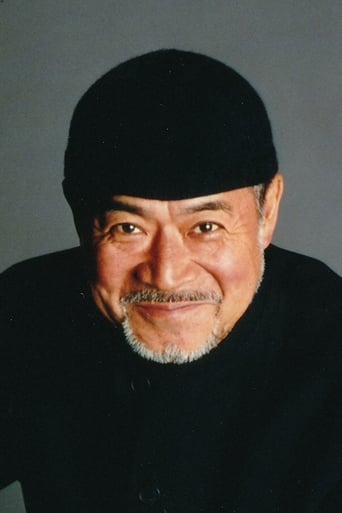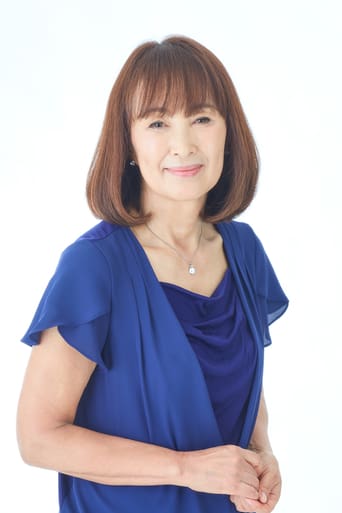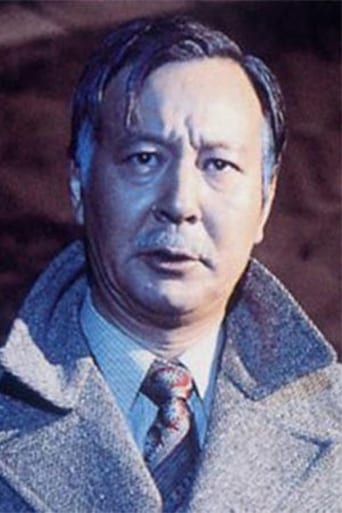Matialth
Good concept, poorly executed.
Marva
It is an exhilarating, distressing, funny and profound film, with one of the more memorable film scores in years,
Yashua Kimbrough (jimniexperience)
Masterclass in the Art of Bloody Violence - but violence with a purpose . Direction within the violence , and excellent direction in the story as a whole.Based on the Lady Snowblood manga by Kazuo Koike; a child is born an asura, born for the sole purpose of avenging her family's murder and humiliation by four bandits. Born to a mother serving a life sentence on murder, and cared by a strict priest honing her assassin skills, she has all the tool needed to carry out her mission - a long bloody tale that drags police, a news reporter, brothels, and rivals , blood sprayiage everywhere all in the name of her mother's honor and redemption.The movie that inspired Kill Bill, Rurouni Kenshin, Sympathy for Lady Vengeance, Red Dead Redemption, among countless others . Instantaneous classic
classicsoncall
Even without knowing it or reading other reviews of the picture on this board, I had an instinctive feeling that this film would have been an inspiration for Tarantino's "Kill Bill" films. Many of the elements in this picture surface again in his movies, and others have done a fine job of detailing those specifics, so I won't have to go into them here.What I liked about this story had to do with not following the typical revenge route that most Ninja assassin flicks take. Yuki Kashima (Meiko Kaji) wasn't trained in the physical martial arts per se, her brutal disciplinarian Dokai (Ko Nishimura) instructed her in skilled swordsmanship. There was also the uniquely creative idea of using a newspaper writer to tell the 'fictional' story of Lady Snowblood in such a way as to parallel Yuki's life experience to draw out her victims from hiding.What detracts from these tales somewhat, at least for me, is the brilliant clarity of all that bright red blood spurting around whenever a swordsman/swordswoman contacts a vital organ. Granted, it's done for effect, but it just doesn't come across realistically. Nor does the ease with which one can cut a victim's body in half as if slicing through a brick of butter. Could it be that easy? I hardly think so.One element introduced in the story sounded intriguing enough that I had to look it up. That had to do with what the picture described as the 'Blood Tax Riots of 1873'. It turns out that this wasn't so much a revolt against a pecuniary tax (although two hundred seventy yen in the story would relieve one's duty), but one against the Meiji government's attempt at a conscription service. There were other policies of the government that met with hostility as well, such as land and education reform that did not meet with the approval of those whose lives were being affected.With that backdrop, introducing the Blood Tax Riots into the story was generally a moot point, since Yuki was a woman who would not have been affected by conscription. Thinking about that, I had to wonder why the idea was introduced in the first place, other than it sounding cool.Anyway, the story does manage to take some interesting twists and turns relative to the identities of the three victims Yuki must seek out and their relationships to other characters in the story. Not entirely unpredictable in hindsight, but they are surprising when revealed through the course of the picture. One on one comparisons with Tarantino's epic flicks however is probably a moot exercise, coming as they did thirty years later with the benefit of advanced technology and CGI camera tricks. Yet it's still a fine revenge picture for Japanese cinema fans and not for the faint hearted.
tomgillespie2002
In 1874 Japan, a woman gives birth in a prison. Almost a year before, the woman, Sayo (Miyoko Akaza), her husband and son are attacked in a village by four criminals - Okono (Sanae Nakahara), Banzo (Noboru Nakaya), Tokuichi (Takeo Chii) and Gishiro (Eiji Okada). The husband and son are murdered in cold bold, and Sayo is taken by Tokuichi to work for him. After Sayo murders him, she is sent to prison, where she has sex with many guards in the hope of becoming pregnant, to give birth to a child that can avenge her. That child is Yuki (Meiko Kaji), who after receiving years of training from a priest, becomes Lady Snowblood, a lethal assassin whose only thirst is for revenge.While this may sound similar to countless martial arts or samurai films to come out of Japan and China during the 1970's, there's something profoundly different to Lady Snowblood. While it certainly offers scenes of outlandish violence (the blood spurts from the body like a gushing fountain), director Toshiya Fujita, taking inspiration from the manga Shurayukihime, seems more interested in building the foundation to the sweeping story than having scene after scene of flying limbs. Separated by title-carded chapters, the film makes a point of giving us a decent story to each target, subtly interlinking the stories to make sure they flow, rather than simply jumping from one person to the next.What also separates this from others of similar ilk on the grindhouse circuit is the cinematography by Masaki Tamura, which is nothing short of beautiful. I promised myself I would try and get through this entire review without mentioning Quentin Tarantino's Kill Bill (2003-2004), but it's not hard to see why he chose to steal (sorry, it's 'homage' when its Tarantino doing it) the same setting and colour palette. Every scene is wide and lovingly crafted, and when the violence ensues, it turns out that red on white is truly stunning. It may not have the outlandish violence of, say, the Lone Wolf and Cub series (1972-1974), but this has a calm yet quick slash of a sword, rather than an extended sword fight, and the film is clinical in that aspect to say the least. While the pace may be often too slow, this is still a satisfying revenge drama featuring one of the most iconic character of its genre.www.the-wrath-of-blog.blogspot.com
Witchfinder General 666
"Shurayukihime" aka. "Lady Snowblood" of 1973 starring the incomparable Meiko Kaji is probably best known for being the inspiration for Quentin Tarantino's "Kill Bill". While I liked Tarantino's film a lot when it was playing in theaters, I do not think that "Lady Snowblood" needs this attribute, as this one ranks even way higher in my personal appreciation. Yet it is inevitable to compare the two films when one has seen both, simply because Tarantino copied so many aspects of this one. Tarantino's film has used many other inspirations from Japan (including the brilliant "Kozure Ôkami" aka. "Lone Wolf And Cub" films or Norifumi Suzuki's "Sex And Fury"), but it is "Lady Snowblood" with which the similarities are just too obvious to be overlooked. It would take too long to list all the similarities, but I can assure that there are many. Even the narrative structure was copied, and QT also used the theme song sung by Meiko Kaji for the score of his film (I see this as a tribute).The film's eponymous heroine is played by the wonderful Meiko Kaji, THE Nr 1. goddess of Japanese Exploitation cinema (even before fellow beauties Miki Sugimoto and Reiko Ike). Kaji is best known both for this film, and the brilliant "Joshuu Sasori" (aka Female Prisoner Scorpion) films (personal favorites of mine, which I like even more than this one) in which she played the vengeful prison escapee Nami Matsushima. She plays another vengeful young woman here, and she is a delightful angel of vengeance: In 1874, a young woman gives birth to a daughter in prison. Twenty years later, Yuki, the baby girl born in prison, has become a skilled swords-woman, born and raised for the sole purpose to take revenge for the fate of her parents: Shura Yuki Hime - Lady Snowblood... Meiko Kaji is once again wonderful, and it is unthinkable for any other actress to fit in the role even nearly as perfectly as she does. The score is brilliant, most memorably the wonderful theme song sung by actress/singer Kaji herself. The film is brilliantly photographed, the wonderful cinematography as well as the sceneries and choreography hold a beauty that is surpassed only by that of the ravishing heroine herself. The film is blood-soaked from the beginning to the end, the stylish sword-battles are always accompanied by gallons of blood - "Lady Snowblood" truly shows carnage in a rarely beautiful manner. There are many more aspects to praise about "Lady Snowblood", which I will not mention here. I have seen the film three times so far, and it gets better with each viewing. "Lady Snowblood" is a great, bloody, stylish and beautiful gem that comes with my highest recommendations, and that no lover of Exploitation or Japanese cinema could possibly afford to miss! 9/10






